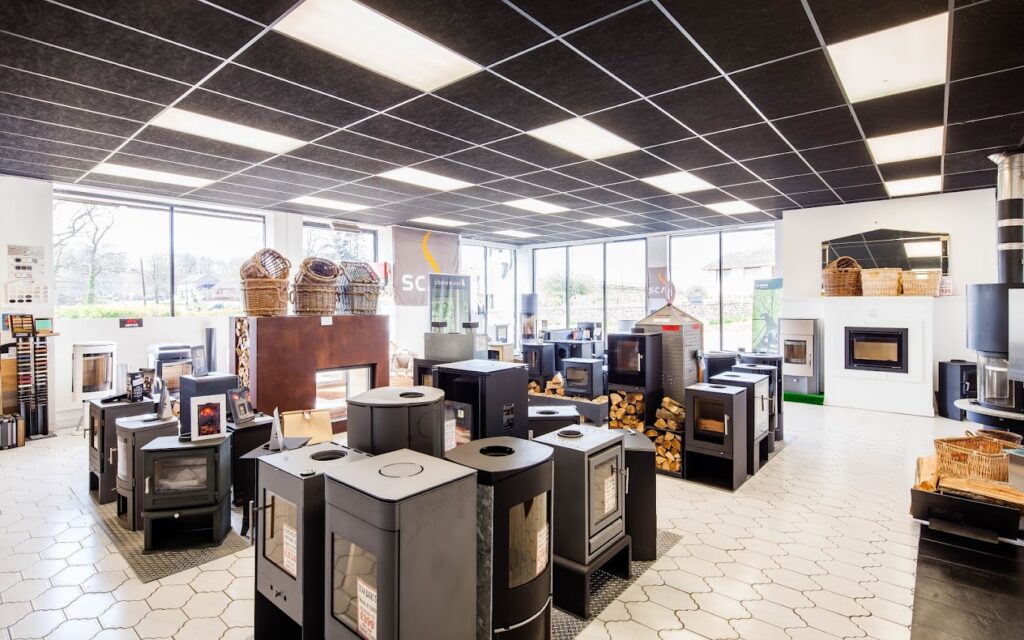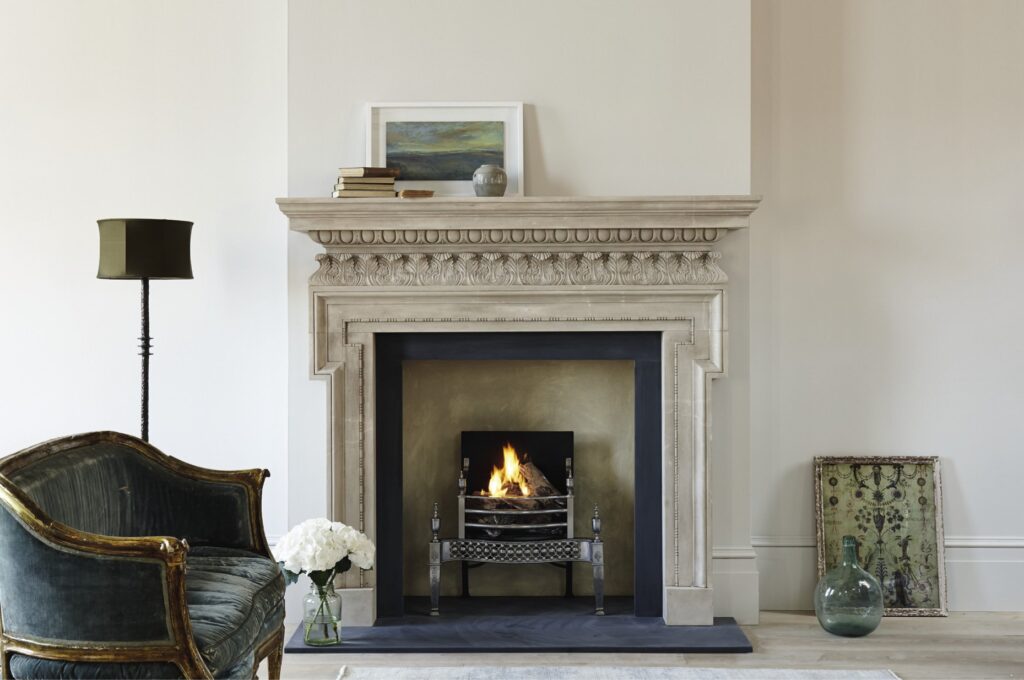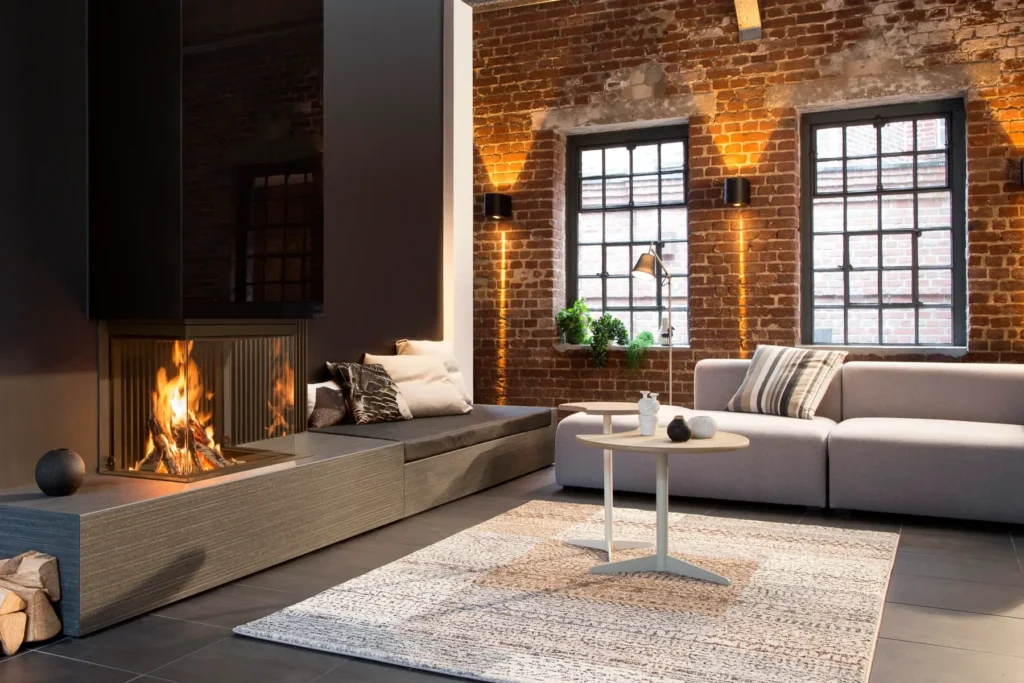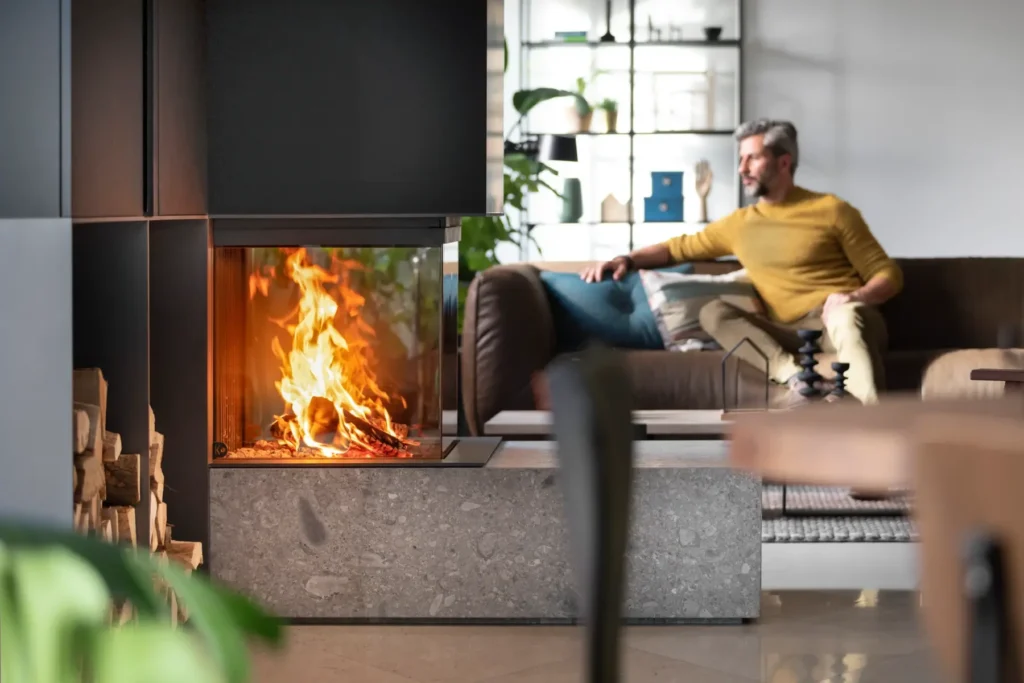Advice on Wood
Or Call Us on 01360 660111
Hardwood vs. Softwood
Hardwood:
Pros:
- High Heat Output: Hardwoods, such as oak, ash, and beech, are denser than softwoods, meaning they burn longer and produce more heat per log.
- Longer Burn Time: Due to their density, hardwoods burn slower, providing a steady and sustained heat output. This makes them ideal for overnight burning.
- Less Residue: Hardwoods produce less resin and sap, resulting in less creosote buildup in your chimney or flue, reducing the risk of chimney fires and frequent cleaning.
Cons:
- Higher Cost: Hardwoods are generally more expensive than softwoods due to their higher density and slower growth rate.
- Longer Seasoning Time: Hardwoods take longer to dry and season properly compared to softwoods. It often requires at least 1-2 years of seasoning time to reach optimal moisture levels.


Softwood:
Pros:
- Lower Cost: Softwoods, like pine, spruce, and fir, are typically less expensive and more readily available than hardwoods.
- Faster Ignition: Softwoods ignite quickly and are great for starting fires, making them useful for kindling and getting a fire going.
- Shorter Seasoning Time: Softwoods dry out faster and are ready to burn sooner, usually within 6-12 months of seasoning.
Cons:
- Lower Heat Output: Softwoods are less dense than hardwoods, resulting in a quicker burn and lower overall heat output. You will need more softwood to achieve the same heat as hardwood.
- More Residue: Softwoods contain more resin and sap, which can lead to increased creosote buildup in your chimney, necessitating more frequent cleaning and posing a higher risk of chimney fires.
Best Types of Wood for Burning
When selecting wood for burning, it’s essential to choose types that provide good heat output, burn efficiency, and minimal creosote production. Here are some of the best types of wood to use:
Best Hardwoods:
- Oak: Dense and long-burning, oak provides a high heat output and burns cleanly once fully seasoned. It’s excellent for overnight burning.
- Ash: Known for its ability to burn well even when slightly green, ash offers good heat output and produces minimal smoke. It’s one of the most user-friendly hardwoods.
- Beech: Similar to oak and ash, beech is a dense hardwood that burns slowly and steadily, providing consistent heat and minimal residue.
- Birch: Burns hot and bright, birch is ideal for quick heat. However, it burns faster than other hardwoods, so it’s often mixed with slower-burning woods like oak.
Best Softwoods:
- Pine: While it burns quickly and is great for kindling, pine should be used in moderation due to its high resin content, which can increase creosote buildup.
- Spruce: Offers a quick burn and is often used for kindling. It’s a good softwood choice for starting fires but not for long-term heating.
- Fir: Burns well and is a common softwood choice for firewood. It provides moderate heat but burns faster than hardwoods.


Recommendations on Moisture Levels for Clean Burning
For efficient and clean burning, it is crucial to use wood with the correct moisture content. Here’s why:
- Optimal Moisture Content: Wood should have a moisture content of 15-20% for the best burning results. This level ensures that the wood burns efficiently, producing maximum heat output with minimal smoke and creosote buildup.
- Seasoning Wood: Properly seasoned wood has been cut, split, and stored in a dry, well-ventilated area for at least 6-24 months, depending on the type of wood (softwoods require less time than hardwoods). Seasoning reduces the moisture content to the optimal level.
- Moisture Meters: Consider using a moisture meter to check the wood’s moisture content before burning. This tool helps ensure that you’re burning wood at the right moisture level for optimal performance and safety.
- Avoid Green or Wet Wood: Burning wood that is too wet or “green” (freshly cut) leads to inefficient combustion, producing more smoke, soot, and creosote. This not only reduces the heat output but also increases the risk of chimney fires and contributes to air pollution.
Conclusion
Choosing the right wood and ensuring it’s properly seasoned is vital for getting the most out of your wood-burning stove. Hardwoods like oak, ash, and beech provide long-lasting heat and efficiency, while softwoods like pine and spruce are excellent for kindling and quick heat. Always aim for a moisture content of 15-20% for clean, efficient burning. By selecting the right fuel and maintaining proper moisture levels, you’ll enjoy a warm, safe, and environmentally friendly wood-burning experience.

